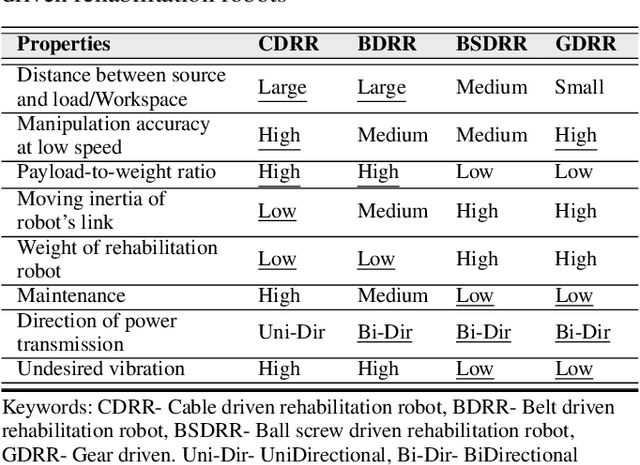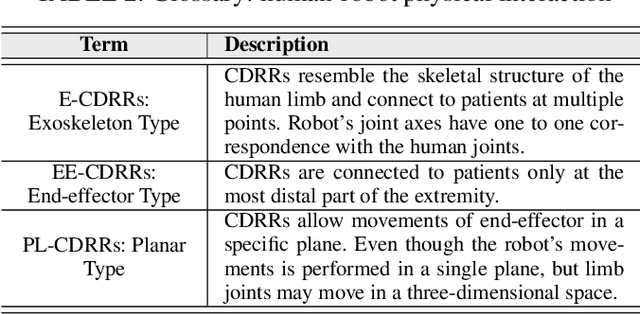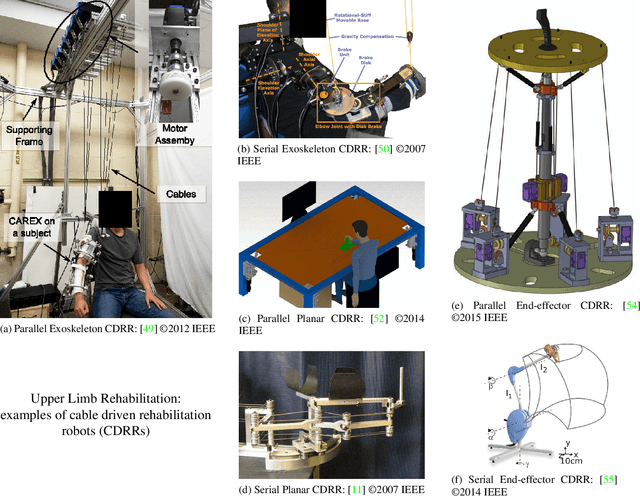Cable Driven Rehabilitation Robots: Comparison of Applications and Control Strategies
Paper and Code
Aug 05, 2021



Significant attention has been paid to robotic rehabilitation using various types of actuator and power transmission. Amongst those, cable-driven rehabilitation robots (CDRRs) are relatively newer and their control strategies have been evolving in recent years. CDRRs offer several promising features, such as low inertia, lightweight, high payload-to-weight ratio, large work-space and configurability. In this paper, we categorize and review the cable-driven rehabilitation robots in three main groups concerning their applications for upper limb, lower limb, and waist rehabilitation. For each group, target movements are identified, and promising designs of CDRRs are analyzed in terms of types of actuators, controllers and their interactions with humans. Particular attention has been given to robots with verified clinical performance in actual rehabilitation settings. A large part of this paper is dedicated to comparing the control strategies and techniques of CDRRs under five main categories of: Impedance-based, PID-based, Admittance-based, Assist-as-needed (AAN) and Adaptive controllers. We have carefully contrasted the advantages and disadvantages of those methods with the aim of assisting the design of future CDRRs
 Add to Chrome
Add to Chrome Add to Firefox
Add to Firefox Add to Edge
Add to Edge